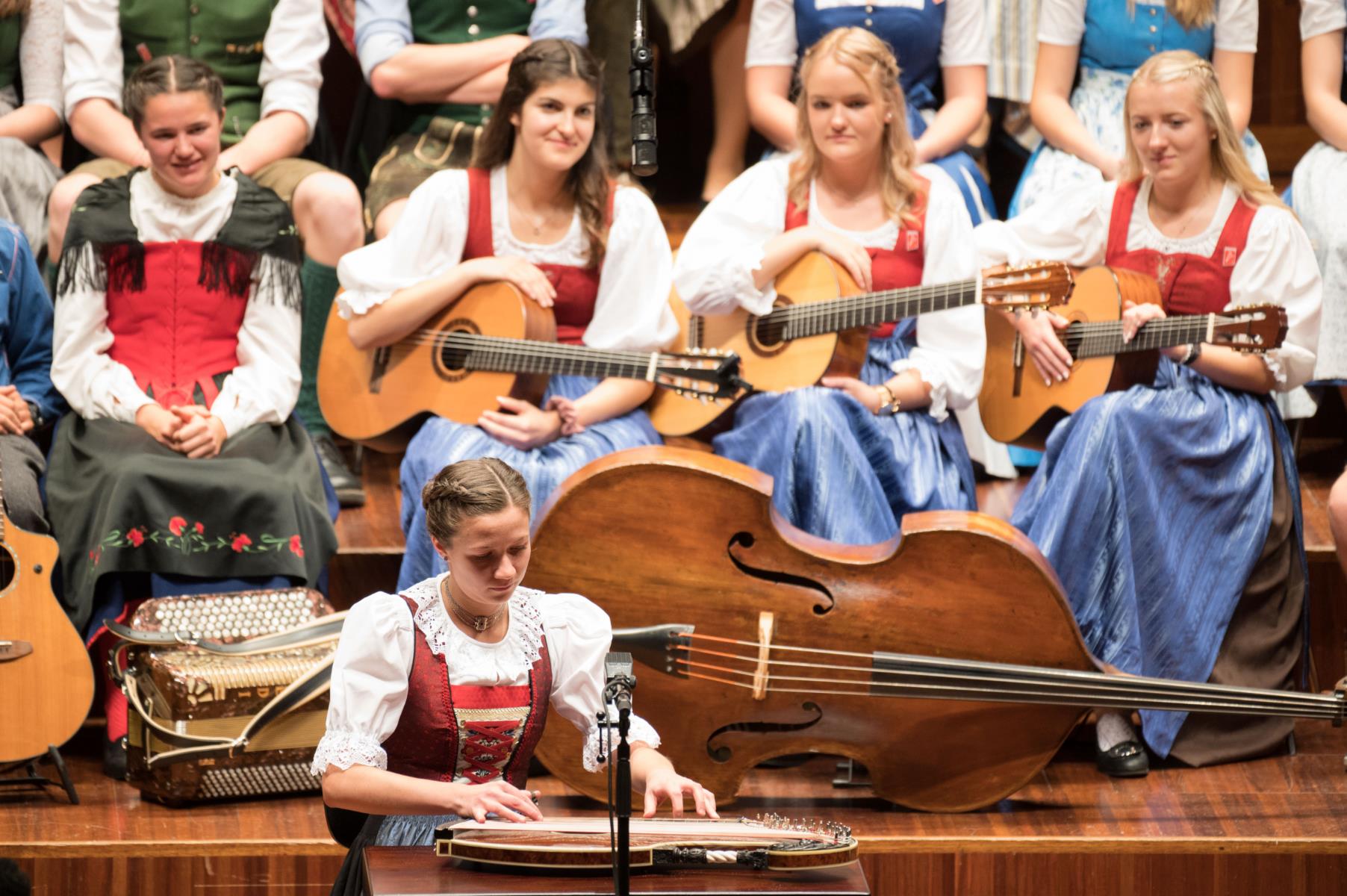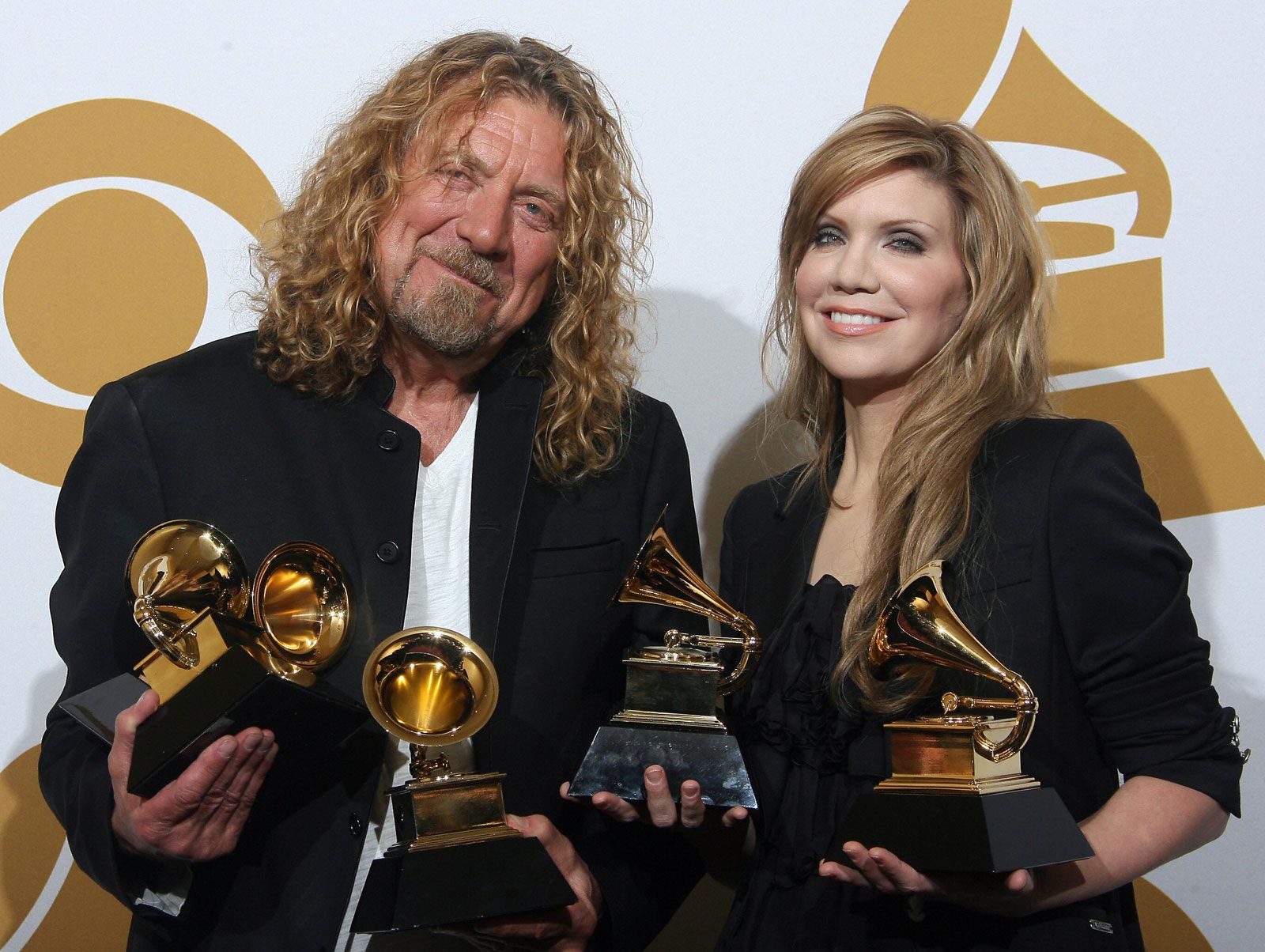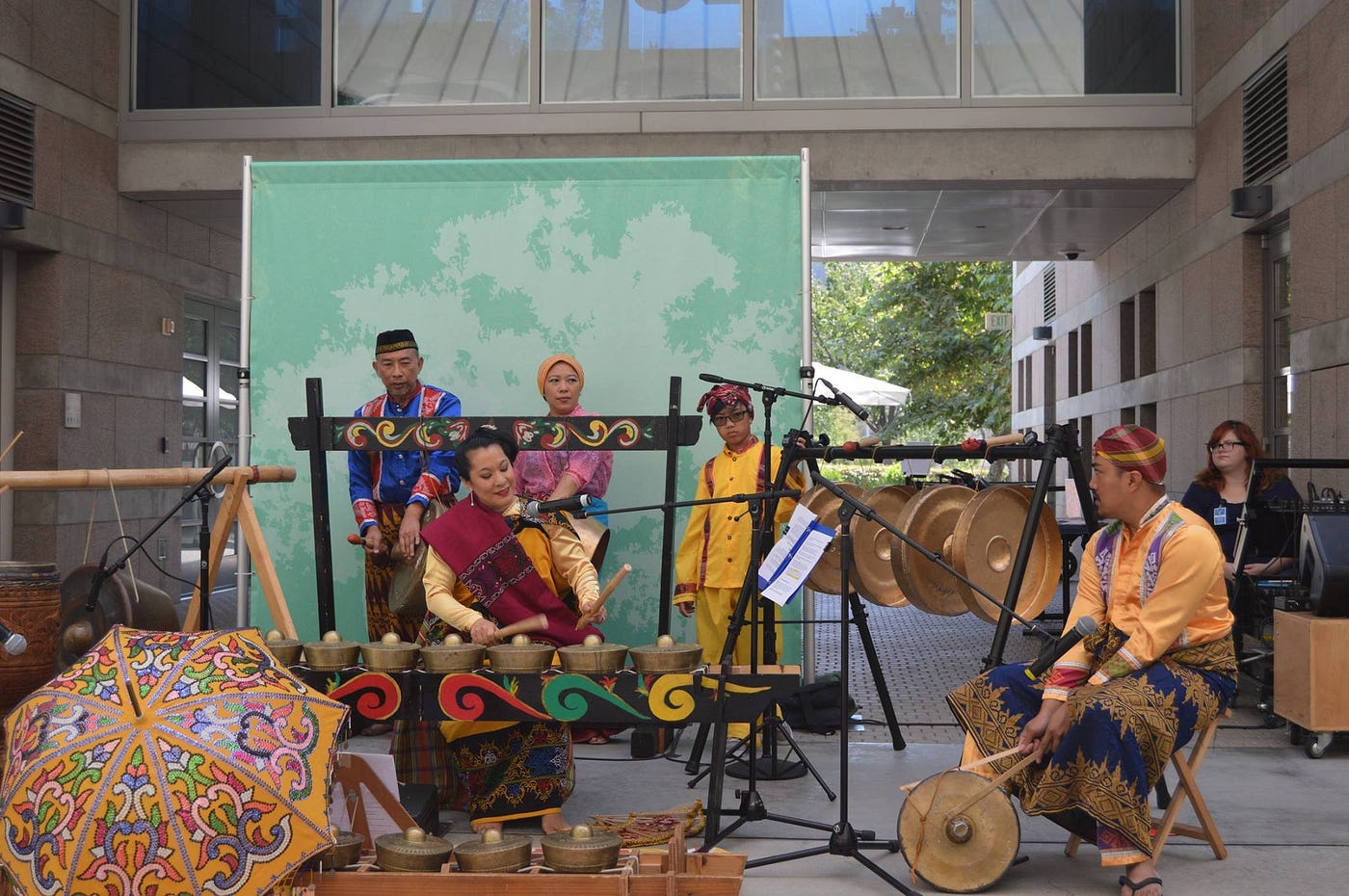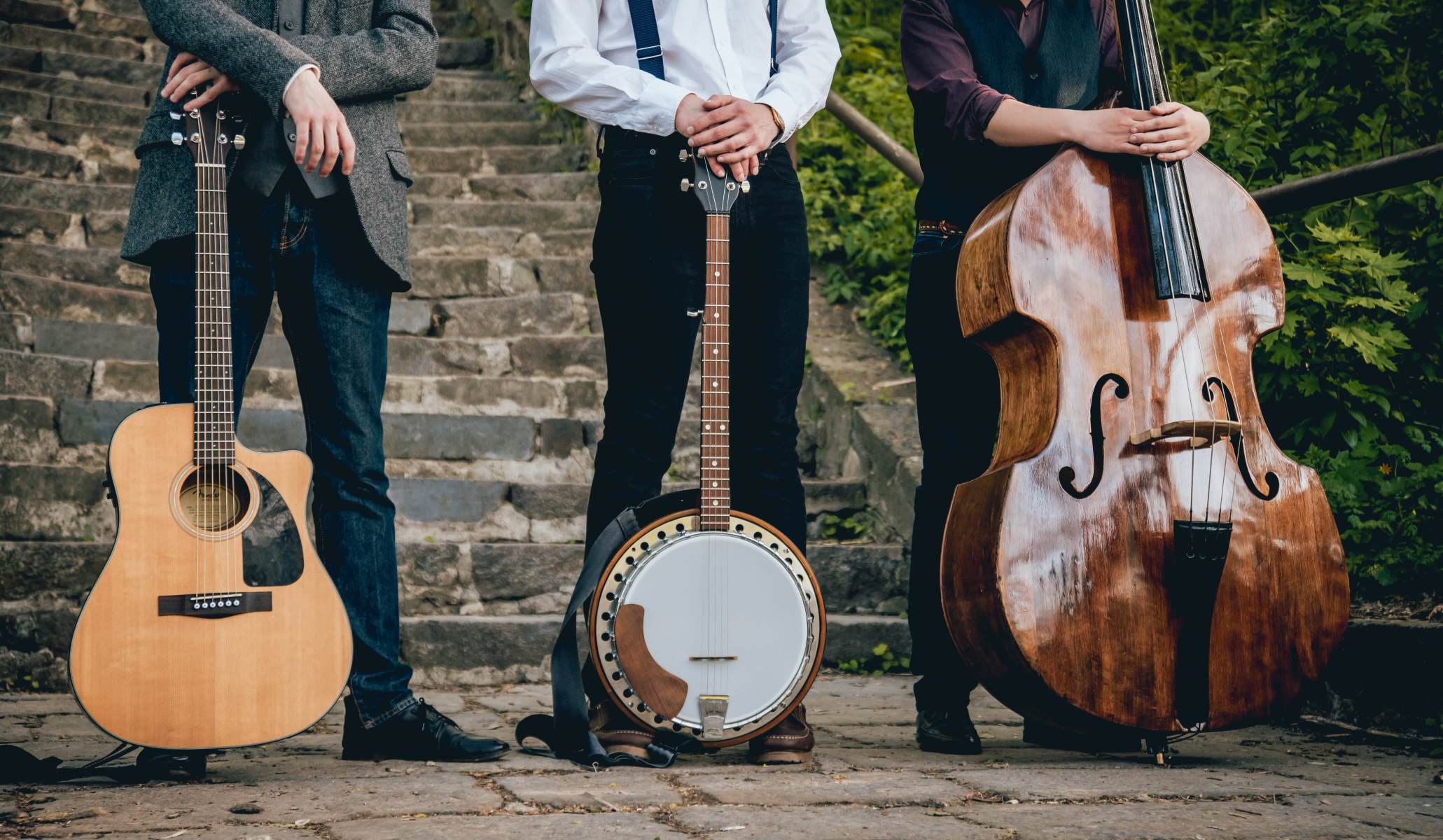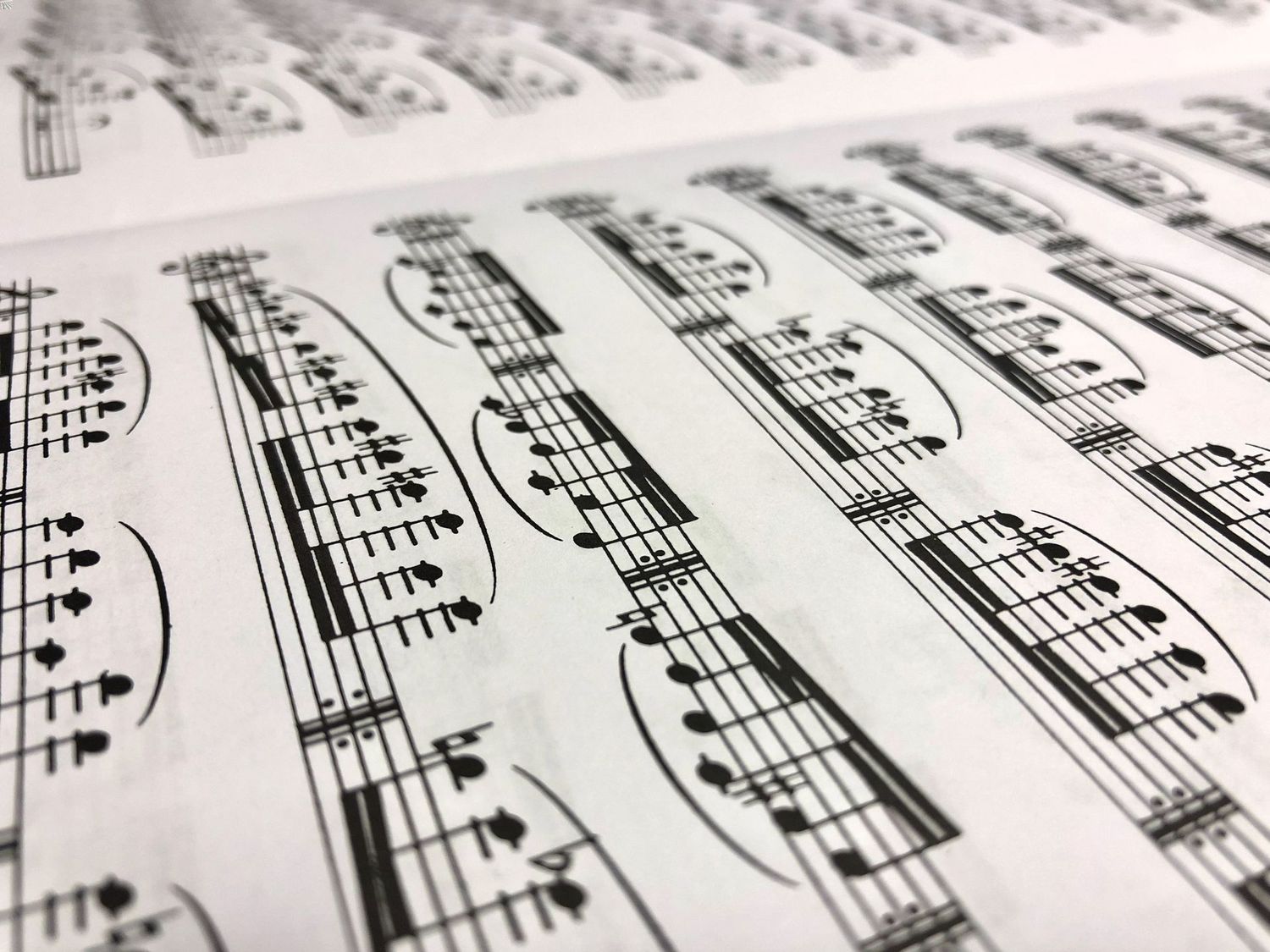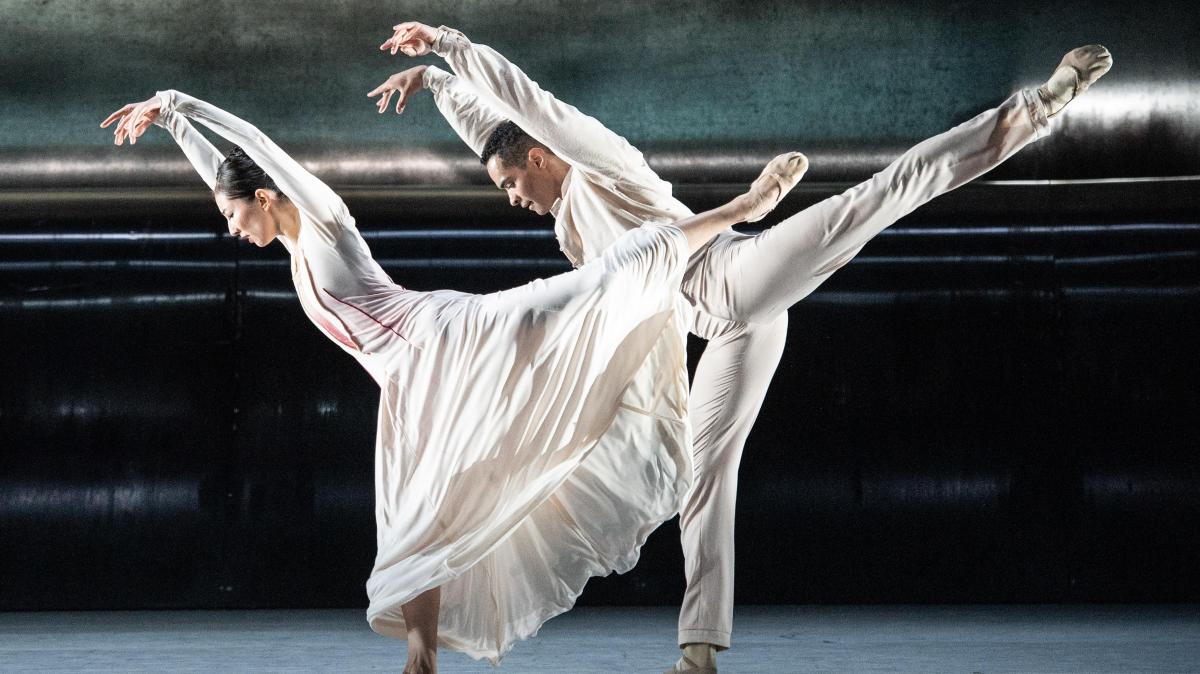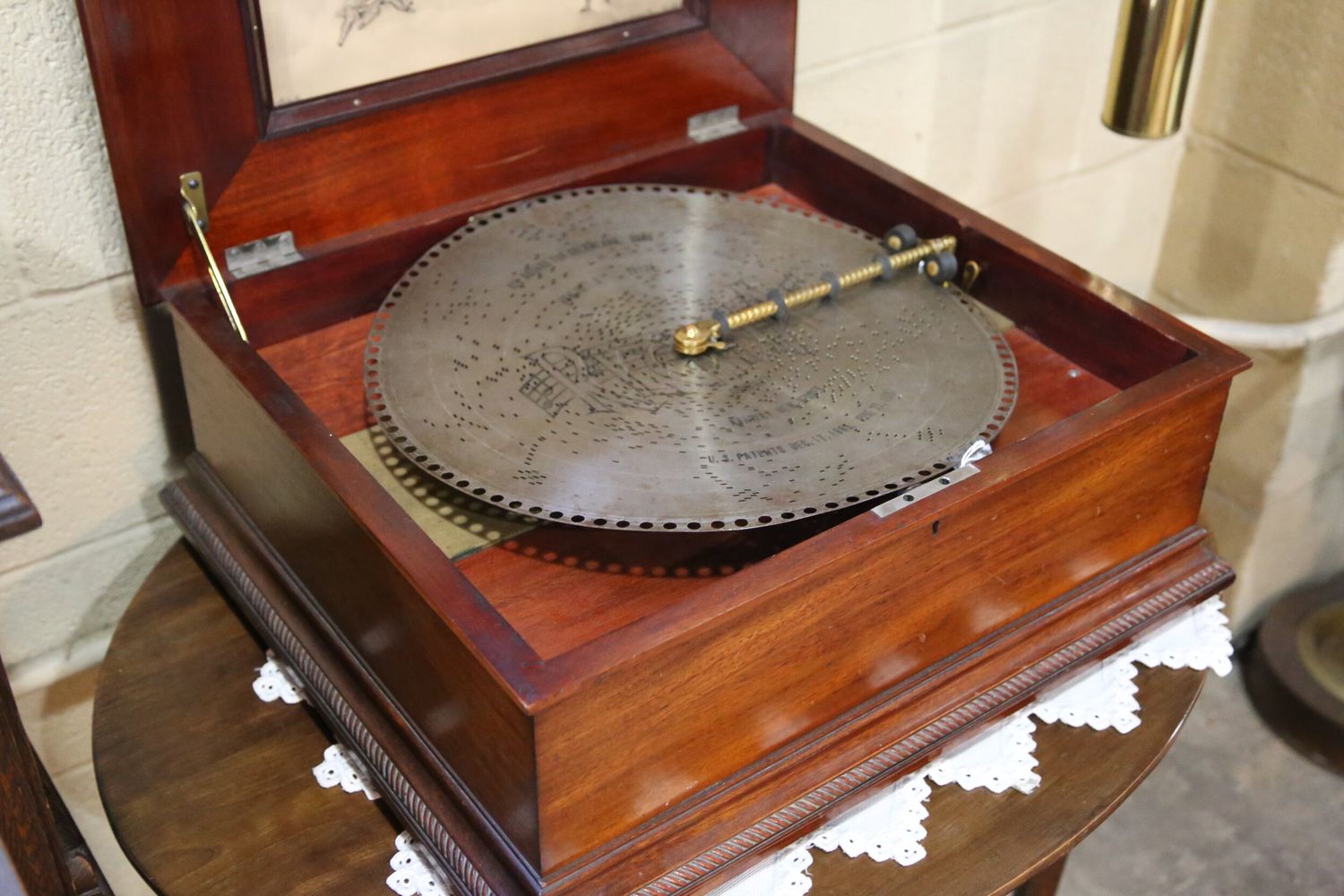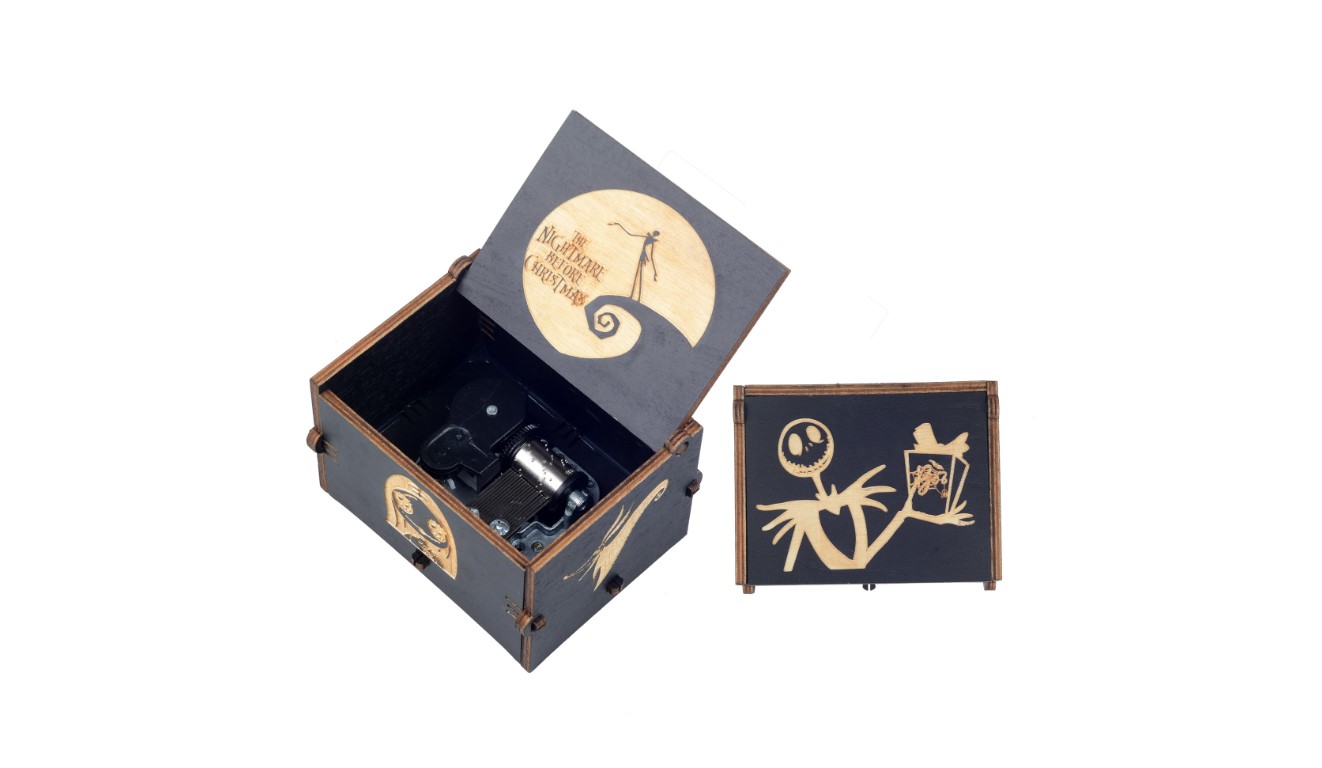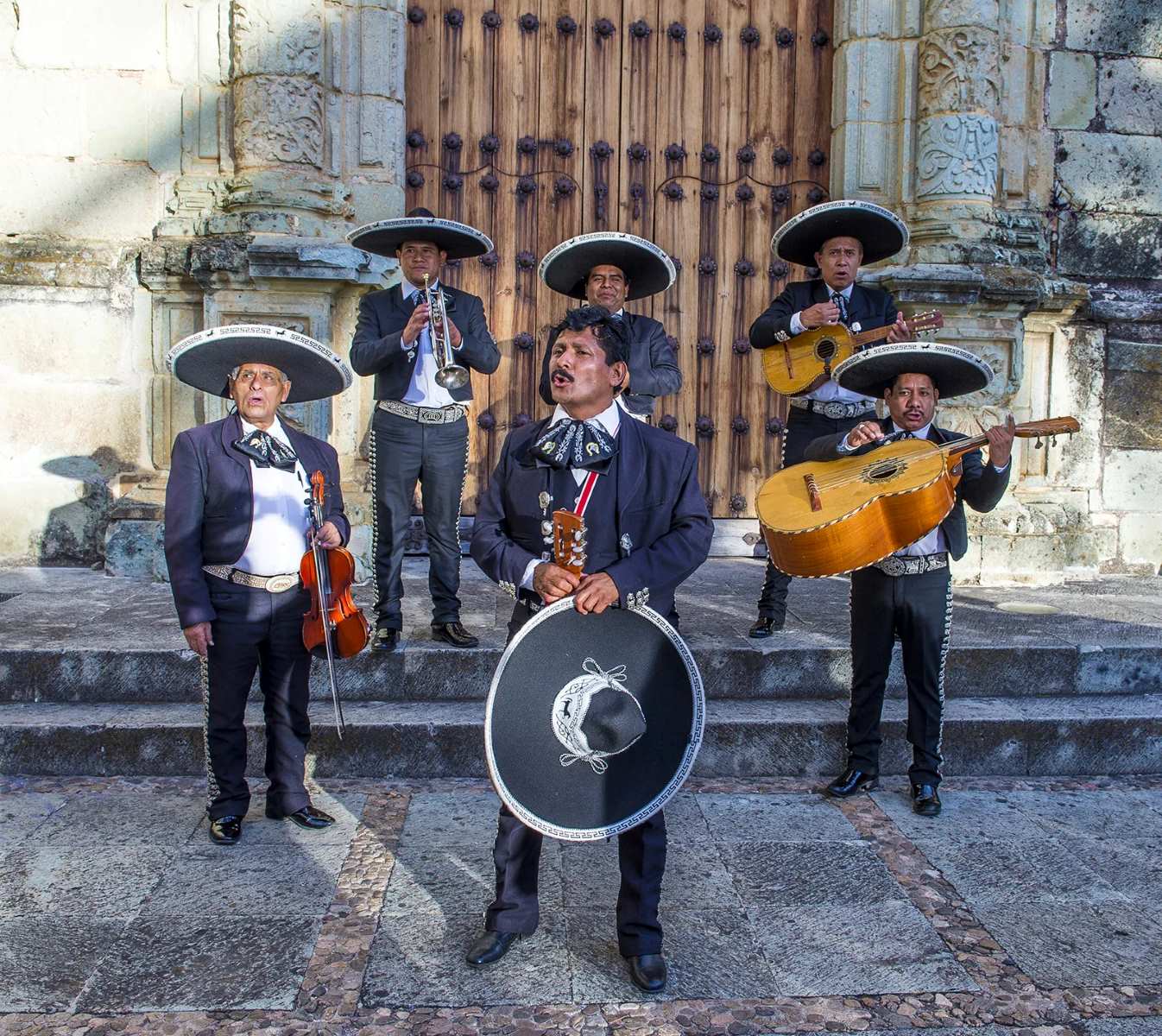

Folk
What Is Mexican Folk Music Called
Modified: February 15, 2024
Discover the enchanting world of Mexican folk music, also known as "Folk." Immerse yourself in the vibrant melodies and rhythmic beats of this rich cultural heritage.
(Many of the links in this article redirect to a specific reviewed product. Your purchase of these products through affiliate links helps to generate commission for AudioLover.com, at no extra cost. Learn more)
Table of Contents
- Introduction
- Mexican Folk Music: A Rich Musical Tradition
- Origins and Influences of Mexican Folk Music
- Regional Variations in Mexican Folk Music
- Instruments Used in Mexican Folk Music
- Key Characteristics and Themes in Mexican Folk Music
- Popular Mexican Folk Music Genres
- Contemporary Mexican Folk Music Artists and Bands
- Mexican Folk Music in Popular Culture
- Conclusion
Introduction
Mexican folk music, also known as “música folklórica” or “música tradicional mexicana,” is a vibrant and diverse musical tradition that holds a special place in Mexican culture. It encompasses a wide range of musical styles, reflecting the rich and complex history of Mexico and its diverse indigenous, African, and European influences. Mexican folk music is deeply rooted in the customs, beliefs, and stories of the Mexican people, serving as a powerful expression of their identity and heritage.
With a history dating back hundreds of years, Mexican folk music has evolved and adapted over time, but it has managed to retain its distinctive characteristics and authenticity. It can be heard in various settings, from small rural villages to bustling city streets, and its enchanting melodies and rhythmic patterns resonate with people of all ages and backgrounds.
Throughout Mexico, folk music plays a significant role in traditional festivals, celebrations, and religious ceremonies. It is a vital part of cultural events such as “Día de los Muertos” (Day of the Dead), “Cinco de Mayo,” and various regional festivities. Moreover, it serves as a means for passing down historical narratives, legends, and societal values from one generation to the next.
Mexican folk music is not limited to a single genre or style, but rather encompasses a diverse array of musical forms, including corridos, mariachi, jarabes, huapangos, and many others. Each region in Mexico has its distinctive musical traditions and unique instruments that contribute to the overall tapestry of Mexican folk music.
In this article, we will delve into the fascinating world of Mexican folk music, exploring its origins, influences, regional variations, key characteristics, and popular genres. We will also highlight some influential contemporary Mexican folk musicians and explore how Mexican folk music has made its way into popular culture.
Mexican Folk Music: A Rich Musical Tradition
Mexican folk music is a treasure trove of cultural heritage and artistic expression. It showcases the diverse influences that have shaped Mexico’s history and encompasses a wide range of musical styles and genres. From the haunting melodies of the indigenous communities to the lively rhythms of the mariachi bands, Mexican folk music embodies the spirit and soul of the country.
One of the defining characteristics of Mexican folk music is its ability to evoke a wide range of emotions, conveying stories of love, struggle, joy, and celebration. The lyrical content often reflects the realities of everyday life, addressing themes such as love, nature, social justice, and historical events. Whether it’s the heartfelt ballads known as “corridos” or the energetic dance tunes called “jarabes,” Mexican folk music has a profound ability to connect with listeners on a deep emotional level.
The roots of Mexican folk music can be traced back to the indigenous communities that inhabited Mexico long before the arrival of the Spanish conquistadors. These Native American cultures had a rich oral tradition and used music as a means of communication and spiritual expression. Their ancient musical practices, characterized by the use of traditional instruments like drums, flutes, and rattles, continue to influence Mexican folk music to this day.
During the colonial era, European influences began to seep into Mexican music. Spanish settlers brought with them instruments such as guitars, violins, and harps, which were gradually incorporated into the indigenous musical traditions. This blending of European and indigenous elements gave birth to new musical styles, such as the popular mariachi music, which combines the rhythms and melodies of both cultures.
Mexican folk music has also been influenced by African traditions, particularly in regions with a strong Afro-Mexican presence, such as Veracruz and Guerrero. African slaves brought their musical traditions with them, including the use of percussion instruments like drums and marimbas. These elements merged with the existing indigenous and European musical traditions, creating unique and distinct musical styles.
Today, Mexican folk music continues to evolve and adapt, reflecting the changing cultural landscape of Mexico. While traditional instruments like the guitar, violin, and trumpet remain central to many folk music styles, contemporary artists have also incorporated modern instruments and production techniques into their music, giving it a fresh and contemporary touch.
The next section will explore the origins and influences of Mexican folk music in more detail, providing a deeper understanding of its rich and diverse musical traditions.
Origins and Influences of Mexican Folk Music
The origins of Mexican folk music can be traced back to the indigenous cultures that existed in Mexico long before the arrival of European settlers. These ancient civilizations, such as the Aztecs, Mayans, and Zapotecs, had a rich musical tradition, using music as a means of communication, storytelling, and spiritual expression.
The indigenous musical practices of Mexico were characterized by the use of traditional instruments, such as drums, flutes, and rattles. These instruments were made from materials readily available in their environment, such as clay, wood, and animal hides. The melodies and rhythms were intricately woven together, reflecting the deep connection between music and nature within these cultures.
With the arrival of the Spanish conquistadors in the 16th century, European influences began to shape Mexican music. The Spanish introduced new instruments like guitars, violins, and harps, which soon found their place alongside the indigenous instruments. This fusion of indigenous and European elements gave rise to new musical styles and genres.
One of the most well-known genres of Mexican folk music is mariachi. Originating in the state of Jalisco, mariachi music combines traditional indigenous rhythms and melodies with the influence of Spanish instruments. The mariachi ensemble typically includes guitars, violins, trumpets, and a variety of other instruments. With its lively rhythms and passionate vocals, mariachi has become synonymous with Mexican culture worldwide.
African influences also played a significant role in shaping Mexican folk music, particularly in regions with a strong Afro-Mexican presence, such as Veracruz and Guerrero. The African slaves brought to Mexico during the colonial period introduced their own musical traditions, including the use of percussion instruments like drums and marimbas. This blending of African and indigenous musical elements led to the development of unique musical styles, such as son jarocho and son guerrerense, which are characterized by their infectious rhythms and energetic performances.
Over time, Mexican folk music has continued to evolve and adapt, incorporating new influences and modern elements. In recent decades, contemporary folk musicians have integrated elements of Western popular music, jazz, and even rock into their compositions, creating a fusion of traditional and modern sounds.
By blending indigenous, European, and African musical traditions, Mexican folk music has become a vivid reflection of Mexico’s diverse cultural heritage. It is a testament to the resilience and creativity of the Mexican people, who have used music as a means of preserving their traditions, voicing their stories, and celebrating their identity.
Regional Variations in Mexican Folk Music
Mexico is a country filled with rich cultural diversity, and this is reflected in the regional variations found in Mexican folk music. Each region of Mexico has its distinctive musical traditions, influenced by factors such as geography, history, and the mix of indigenous, European, and African cultures.
In the northern regions of Mexico, particularly in states like Chihuahua and Nuevo León, the musical genre known as “norteño” or “northern music” holds sway. Norteño music is characterized by its lively rhythms and the use of accordion, bajo sexto (a type of 12-string guitar), and the bass guitar. It often features lyrics about love, rural life, and the struggles faced by the working class.
In contrast, the states of Jalisco and Michoacán are known for their vibrant mariachi music. Mariachi bands, dressed in traditional charro outfits, typically feature violins, trumpets, guitarrón (a large bass guitar), and vihuelas (smaller guitars). The soaring vocals, powerful brass sections, and intricate instrumental arrangements are a hallmark of this genre. Mariachi music is often associated with celebrations and festive occasions.
In the southern state of Veracruz, the musical style known as “son jarocho” holds significant cultural importance. Son jarocho is characterized by its lively rhythms and the use of instruments such as the jarana (a small guitar-like instrument), requinto (a smaller version of the guitar), and the harp. The lyrics often tell stories of love, nature, and daily life in the region.
The Yucatan Peninsula has its unique musical traditions, influenced by the Mayan culture. One of the prominent genres is “trova yucateca,” which features gentle melodies and poetic lyrics that showcase the beautiful landscapes and romantic sentiments of the region.
The coastal state of Guerrero is known for its vibrant son guerrerense music, which combines African, indigenous, and Spanish influences. This genre often features the use of percussion instruments such as drums and marimbas, creating a lively and energetic sound that is perfect for dancing.
These are just a few examples of the regional variations in Mexican folk music. Each state and region in Mexico has its own unique styles and genres, reflecting the distinct cultural heritage and traditions of the local communities. Exploring the diverse regional variations in Mexican folk music provides a deeper appreciation for the country’s rich musical tapestry.
Instruments Used in Mexican Folk Music
Mexican folk music encompasses a wide array of instruments, both indigenous and introduced during the colonial period. These instruments play a vital role in creating the unique sounds and rhythms that define Mexican folk music.
One of the most iconic instruments associated with Mexican folk music is the guitar. The guitar is central to many genres, providing melodic and rhythmic accompaniment. In addition to the standard six-string guitar, variations such as the requinto and the jarana are used in specific regional styles. The requinto is a smaller guitar with a higher pitch, often used in mariachi music, while the jarana is a traditional instrument from Veracruz, often associated with son jarocho.
Another instrument commonly found in Mexican folk music is the violin. The violin adds melodic richness and depth to the music, especially in genres like mariachi. Skilled violinists play intricate melodies and elaborate solos, showcasing their technical prowess and adding emotion to the compositions.
The harp is a distinctive instrument used in various regional styles of Mexican folk music. The large, stringed instrument delivers a hauntingly beautiful sound and is commonly associated with genres like son jarocho and huapango. With its resonating strings and delicate plucking, the harp adds a touch of elegance and grace to the music.
The accordion is another significant instrument in Mexican folk music, especially in the northern regions. It provides a distinct sound and is a key component of norteño and conjunto music. The lively and rhythmic nature of the accordion adds energy and excitement to the performances, making it a favorite instrument in dance halls and celebrations.
Percussion instruments also play a crucial role in Mexican folk music. The most widely used percussion instrument is the drum, which comes in various sizes and shapes, such as the tambora and the tarima. The tambora, a large bass drum often played with mallets, is characteristic of genres like tambora sinaloense, while the tarima, a wooden platform used as a percussion instrument, is central to the lively zapateado dance style.
Addition to these instruments, other unique instruments can be found in specific regions or genres. These include the vihuela (a small, five-string guitar-like instrument) and the guitarrón (a large bass guitar) used in mariachi music, the marimba (a wooden xylophone-like instrument) popular in the southern regions, and various types of rattles and shakers used in indigenous music.
The diverse range of instruments used in Mexican folk music creates a rich tapestry of sounds and textures. The combination of indigenous, European, and African influences in the instruments reflects the diverse cultural history of Mexico and contributes to the unique identity of Mexican folk music.
Key Characteristics and Themes in Mexican Folk Music
Mexican folk music is characterized by several distinctive features that contribute to its rich and captivating sound. These characteristics, both musically and thematically, define the essence of Mexican folk music and reflect the cultural heritage of the Mexican people.
Rhythmically, Mexican folk music is often lively and upbeat, with infectious rhythms that encourage dancing and celebration. Whether it’s the spirited mariachi trumpets, the syncopated patterns of son jarocho, or the energetic accompaniment of the tambora, the rhythmic elements of Mexican folk music create a vibrant and engaging musical experience.
Melodically, Mexican folk music features a range of scales and styles, reflecting the different regional variations. The melodies can be hauntingly beautiful, as heard in the lyrical ballads of the corridos or the soulful vocals of trova yucateca. These melodies often incorporate elements of indigenous, European, and African musical traditions, creating a unique and diverse sonic palette.
Thematically, Mexican folk music covers a wide range of topics, with lyrics that reflect the realities of Mexican life and culture. Love, romance, and heartbreak are common themes in many genres, showcasing the deeply emotional and passionate nature of Mexican folk music. Political and social issues also find their way into the lyrics, shedding light on the struggles and injustices faced by the Mexican people.
Furthermore, Mexican folk music often serves as a means of preserving historical narratives and cultural identity. Through songs, legends, and stories, Mexican folk musicians pass down the rich oral traditions of their ancestors, ensuring that their history and heritage are not forgotten. This connection to the past provides a sense of continuity and pride among the Mexican people.
Religious and spiritual themes are also prevalent in Mexican folk music, reflecting the deeply ingrained Catholic traditions in Mexican culture. Many traditional songs are dedicated to religious figures or commemorate religious events and celebrations. Groups like the Matachines perform ceremonial dances and music as part of religious ceremonies and festivals.
Lastly, Mexican folk music embraces a sense of community and togetherness. It is often performed in groups or ensembles, fostering a collective spirit and creating a shared experience. The interplay between various instruments and vocal harmonies showcases the collaborative nature of Mexican folk music, emphasizing the importance of unity and harmony.
Overall, the key characteristics and themes in Mexican folk music highlight the cultural diversity, emotional depth, and societal significance of this musical tradition. It serves as a powerful expression of Mexican identity and heritage, capturing the essence of Mexican life, love, struggles, and celebrations.
Popular Mexican Folk Music Genres
Mexican folk music encompasses a wide range of genres, each with its unique style and regional variations. These genres have left an indelible mark on Mexican culture and have gained popularity not only within Mexico but also across the globe. Here are some of the most popular Mexican folk music genres:
Corridos: Corridos are narrative ballads that tell stories of historical events, heroes, outlaws, love, and social issues. These songs capture the essence of Mexican history and are often accompanied by the guitar or accordion. Corridos are deeply rooted in Mexican culture and have evolved over time, reflecting contemporary events and topics.
Mariachi: Mariachi is one of the most recognizable Mexican folk music genres. With its dynamic mix of vocals, trumpets, violins, guitars, vihuelas, and guitarrón, mariachi music creates a lively and festive atmosphere. Mariachi bands are known for their vibrant attire, sombreros, and charro outfits, adding visual flair to their performances.
Jarabes: Jarabes are energetic dance tunes that originated in various regions of Mexico. These lively and rhythmic songs combine elements of indigenous, Spanish, and African music. Jarabes often feature a variety of instruments such as violins, guitars, and percussion, and are accompanied by synchronized dance movements.
Huapangos: Huapangos are traditional Mexican songs originating from the Huasteca region. Known for their fast-paced rhythms, intricate melodies, and improvisation, huapangos are usually performed with string instruments like the huapanguera, jarana huasteca, and guitar. These songs are often lively and showcase the technical skills of the musicians.
Son Jarocho: Son jarocho hails from the state of Veracruz and has strong Afro-Mexican influences. It combines elements of indigenous, Spanish, and African music, featuring instruments such as the jarana, requinto, and the distinctive sound of the harp. Son jarocho is often accompanied by intricate footwork called zapateado, making it an integral part of traditional Veracruzano culture.
Trovador: Trovador music is characterized by beautiful melodies and poetic lyrics. It emerged in the Yucatan Peninsula and is influenced by traditional Mayan culture. Trovador songs often speak of love, nature, and the enchanting landscapes of the region. These melodies are gentle and capture the romantic spirit of the Yucatan.
Tambora Sinaloense: Tambora music originated in the state of Sinaloa and has a unique sound defined by its prominent use of brass and percussion instruments. Tambora sinaloense is characterized by its lively, rhythmic beats and energetic performances, often accompanied by expressive brass sections. This genre is best enjoyed live, where the contagious rhythms inspire people to dance and celebrate.
These are just a few of the many diverse genres within Mexican folk music. Each genre represents a different aspect of Mexican culture, history, and regional traditions. Mexican folk music continues to evolve and adapt, incorporating new elements and influences while retaining its authentic charm and cultural significance.
Contemporary Mexican Folk Music Artists and Bands
The rich tradition of Mexican folk music continues to thrive in contemporary times, with numerous talented artists and bands carrying the torch and bringing new perspectives to this cherished musical genre. While honoring the traditions of Mexican folk music, these artists also infuse their own unique styles and influences, creating a fusion of the old and the new. Here are some notable contemporary Mexican folk music artists and bands:
Lila Downs: Known for her powerful vocals and captivating stage presence, Lila Downs has gained international acclaim for her fusion of traditional Mexican folk music, jazz, and blues. With lyrical depth and a strong social conscience, she explores themes of cultural identity, feminism, and social justice.
Natalia Lafourcade: With her sweet and soulful voice, Natalia Lafourcade has become one of the leading voices in contemporary Mexican folk-pop. She blends elements of traditional Mexican folk music with modern influences, creating a fresh, vibrant, and enchanting sound.
Eliseo Robles y Los Barbaros del Norte: Eliseo Robles is a renowned accordionist and singer who has contributed to the popularization of norteño music. Alongside his band Los Barbaros del Norte, he delivers energetic performances, combining traditional norteño music with modern influences.
Jarabe de Palo: Jarabe de Palo is a Spanish band led by Pau Donés, known for their Latin rock sound infused with elements of Mexican folk music. Their unique style and lyrical depth have garnered them a devoted following both in Mexico and internationally.
Mon Laferte: Mon Laferte has gained acclaim for her soulful and evocative voice, drawing on influences from various Latin American genres, including Mexican folk music. Her emotionally charged performances and powerful lyrics resonate deeply with audiences.
Café Tacvba: Café Tacvba is a highly influential band in the Mexican alternative rock scene. While not strictly categorized as folk, their eclectic and diverse musical approach often includes elements of traditional Mexican sounds, showcasing their innovative and experimental spirit.
Los Cojolites: Hailing from Veracruz, Los Cojolites are renowned for their interpretation of son jarocho music. They skillfully blend traditional roots with contemporary arrangements, breathing new life into this cherished musical genre.
Jessie & Joy: The Mexican-American pop duo Jessie & Joy infuse elements of Mexican folk music into their melodic pop sound. Their heartfelt lyrics, beautiful harmonies, and catchy melodies have garnered them widespread acclaim and recognition.
These are just a few examples of the many talented contemporary artists and bands that contribute to the vibrant and ever-evolving landscape of Mexican folk music. Whether through innovative reinterpretations, unique fusions, or the preservation of traditional sounds, these artists continue to captivate audiences and carry forward the legacy of Mexican folk music into the modern world.
Mexican Folk Music in Popular Culture
Mexican folk music has made a significant impact on popular culture, both within Mexico and around the world. Its distinctive sounds and captivating rhythms have been featured in various forms of entertainment, contributing to the global recognition of Mexican culture. Here are some notable ways Mexican folk music has influenced popular culture:
Film and Television: Mexican folk music has been prominently featured in numerous films and television shows, both in Mexico and internationally. The lively and festive sounds of mariachi music, in particular, have become synonymous with Mexican culture on the silver screen, with movies like “Coco” and “El Mariachi” showcasing the vibrant energy of traditional Mexican music.
Festivals and Celebrations: Mexican folk music takes center stage during the country’s vibrant festivals and celebrations. From large-scale events like the Guelaguetza in Oaxaca to local fiestas and religious processions, Mexican folk music is an integral part of the festivities. The iconic sounds of mariachi, jarabes, and other folk music genres provide the soundtrack to these joyful and culturally significant occasions.
Musical Influences: Mexican folk music has influenced various genres of music globally, from Latin American music to international music scenes. Artists around the world have incorporated Mexican folk music elements into their compositions, infusing their songs with the distinctive sounds and rhythms of traditional Mexican music. This cross-pollination of musical styles has led to exciting collaborations and the development of new hybrid genres.
Dance and Performing Arts: Mexican folk music is often intertwined with traditional dance forms, enhancing the visual and auditory experience. The lively rhythms of Mexican folk music inspire captivating dance performances, such as the zapateado footwork in son jarocho and the intricate steps of traditional folk dances like La Danza de los Viejitos. These performances showcase the dynamic relationship between music and movement, captivating audiences worldwide.
Global Music Festivals: Mexican folk music has a significant presence in international music festivals where it showcases the rich cultural heritage of Mexico. Artists and groups specializing in Mexican folk music have represented their country in renowned festivals such as the WOMAD Festival and the Glastonbury Festival, exposing global audiences to the vibrant sounds and traditions of Mexican folk music.
Artistic Inspiration: Mexican folk music has provided inspiration for numerous artists, both within Mexico and internationally. Painters, poets, writers, and other creatives have drawn upon the essence of Mexican folk music, its melodies, lyrics, and themes, to inform their artistic expressions. This influence can be seen in the works of renowned Mexican artists like Frida Kahlo, who incorporated traditional Mexican elements into her art.
The influence of Mexican folk music in popular culture extends much further than these examples, permeating different forms of entertainment, art, and cultural expressions. Its enduring appeal is a testament to the richness and universality of the Mexican folk music tradition, allowing it to transcend borders and create an indelible impact on the global stage.
Conclusion
Mexican folk music is a vibrant and diverse musical tradition that holds a special place in the hearts of the Mexican people. With its rich history, regional variations, and distinct characteristics, Mexican folk music serves as a powerful expression of Mexican culture and identity.
From the haunting melodies of indigenous communities to the lively rhythms of mariachi bands, Mexican folk music captivates listeners with its emotional depth and captivating sounds. It encompasses a wide range of genres, including corridos, mariachi, jarabes, huapangos, and more, each with its own unique style and regional variations.
The origins of Mexican folk music can be traced back to the indigenous cultures of Mexico, who intertwined their musical traditions with the influence of European settlers and African slaves. This fusion of indigenous, European, and African elements resulted in a diverse and rich tapestry of Mexican folk music.
Mexican folk music continues to thrive not only as a cultural expression but also in popular culture. It has left an indelible mark on various forms of entertainment, influencing films, festivals, dance, and international music scenes. Artists and bands have embraced Mexican folk music, creating a fusion of traditional sounds with contemporary influences.
Mexican folk music has become a symbol of cultural pride and heritage, preserving historical narratives, and showcasing the rich diversity of Mexico. Its themes of love, struggle, celebration, and social justice resonate with audiences worldwide, creating connections and fostering appreciation for Mexican culture.
In conclusion, Mexican folk music is not only a rich musical tradition but also a profound representation of the Mexican spirit. Its unique sounds and powerful messages continue to captivate audiences and leave a lasting impact, ensuring that this beautiful form of expression will continue to thrive for generations to come.

